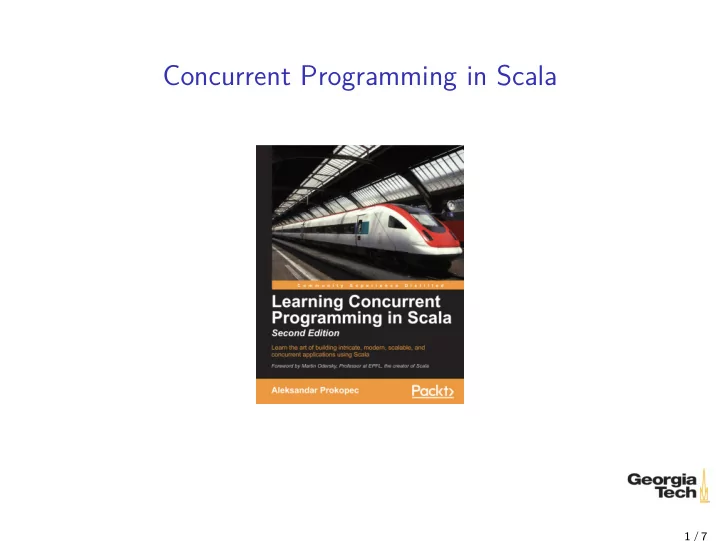

Concurrent Programming in Scala 1 / 7
Concurrent Programming 1 ◮ Concurrent programming: separate overlapping threads of execution, not necessarily run on separate processors/cores ◮ Parallel programming: separate threads of execution running on separate threads/cores ◮ Distributed programming: a program running on separate machines Issues: coordination, communication 1 https://www.packtpub.com/eu/application-development/learning- concurrent-programming-scala-second-edition 2 / 7
Concurrency Fundamentals Programs are executed by OS in of of two primary ways ◮ Cooperative multitasking: processes yield the processor when they don’t need it, freeing up processor resources for other processes ◮ Preemptive multitasking: OS schedules processes/threads on processors. When a process/thread executes, how much is executed before getting suspended again is under OS control Modern OSes use preemptive multitasking. 3 / 7
Processes and Threads ◮ A process is an instance of a computer program that is being executed. ◮ Threads are independent computations occurring in the same process. In a typical operating system, there are many more threads than processors. 4 / 7
JVM Threads JVM starts a main thread for every application. Application may create and run (technically, schedule for execution) any number of additional threads. Example code: https://gitlab.com/cs2340/scala-concurrency 5 / 7
Thread Communication ◮ Each thread has its own stack. ◮ A process has a single region of dynamic memory often called “heap” memory. All threads share the heap. Threads communicate by accessing shared memory. 6 / 7
Monitors and Synchronization Race condition: one thread is updating shared memory, another is reading shared memory. Should happen in a specific order, but thread execution is governed by operating system. ◮ Solution: ensure only one thread can acess a particular piece of shared memory and that regions of code accessing that memory execute atomically (don’t get split up by operating system). 7 / 7
Recommend
More recommend